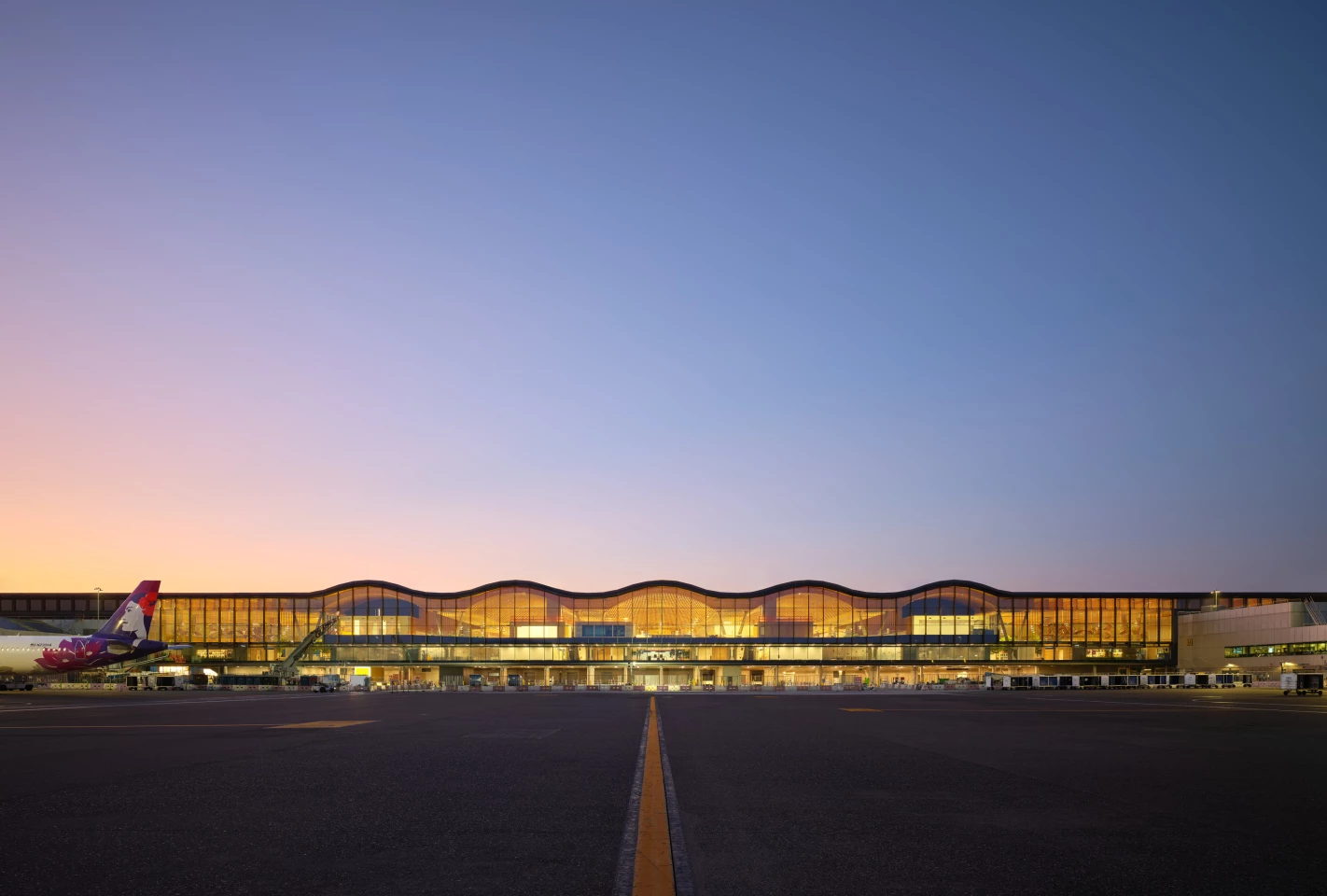Alongside plans for the world's tallest timber tower, another ambitious timber project has come to the USA. ZGF Architects has revealed an impressive extension at Portland International Airport (PDX) in Oregon that's topped by a massive wooden roof measuring a whopping 9 acres (3.6 hectares).
The project consolidates nine buildings that had been put together over decades, creating a new layout, and unifying it all under the timber roof. ZGF Architects carried out the work while minimizing disruption to the airport. A key part of this was to prefabricate the roof in a factory and then position it into place.
The roof itself weighs 18 million lb (roughly 8 million kg) and includes glulam (glued-laminated timber) and other wood, all of which was sourced within a 300-mile (482-km) radius of the terminal. It also incorporates mechanical and wiring systems, with 49 skylights to maximize natural light inside, and it can withstand severe seismicity too.
"Given PDX’s location within the Cascadia subduction zone the new terminal is designed to withstand a magnitude 9 seismic event," explains ZGF Architects. "The roof is held up by 34 Y-shaped columns that are designed with seismic isolation bearings at the top to allow the roof structure to move laterally – up to 24 inches [61 cm] – during a seismic event."

As is a welcome trend in airport design at the moment, the interior has been arranged to be as pleasant and relaxing as possible. Created in collaboration with Place Landscape Architecture, it contains 72 large trees peppered throughout the terminal, as well as cascading gardens and over 5,000 strategically placed plants. The idea is to recreate Portland's pedestrian-friendly, tree-lined streets.
The airport expansion is part of a larger renovation and has an overall budget of US$2 billion. It's expected double the capacity of PDX and will help the airport eventually welcome up to 35 million passengers annually by 2045. This is the first phase of the project and has opened to visitors, however the second phase is still ongoing and will expand it further by 2026.
Source: ZGF Architects








